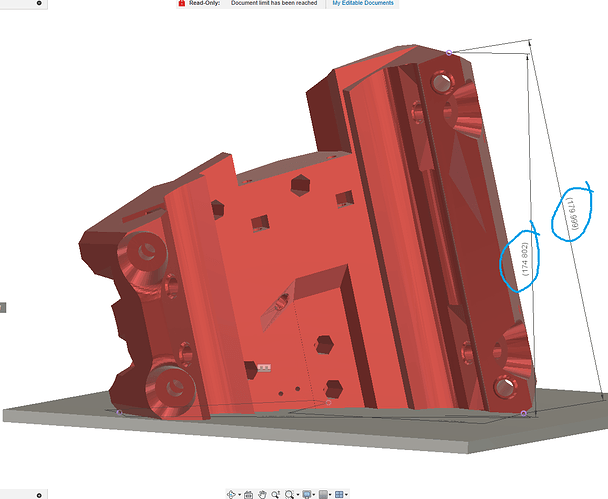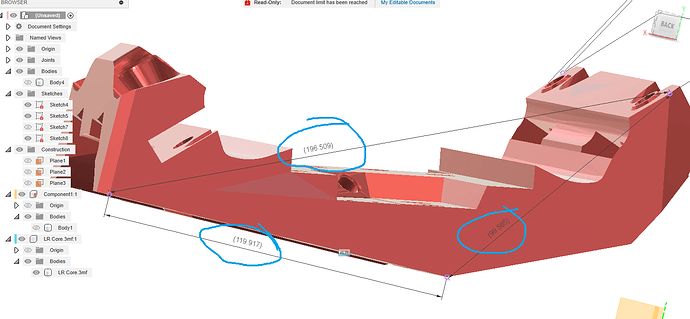Parts > Print Core > Attempt #1 FAILED - Too tall
Checked Print dimensions (relative to the print bed’s XYZ orientation). XY are great, but Z height is ~5mm too tall ![]() .
.
Problem:
- Print Bed to highest point is expected to be 175mm (see dimensions in Fusion 360 sketch below). But my print actually measures 180mm.
- Core width is expected to be 180mm. My print actually measures ~184.5mm across.
Cause/Fix:
Didn’t calibrate Z axis as well as I thought. For my penance, have spent time measuring edges/diagonals of significant features touching the print bed :
Tempted to add calibration marks, slice and print first 2mm to verify dimensions/skew. Will use to compare against my existing LR3 Core. Reason being the existing Core was printed ~yr ago on different printer, I should verify new calibrated Core will match before doing another full print. I potentially might end up intentionally mis-dimensioning the new Core to match the old one.
Will recalibrate Z then kicking off Attempt #2…

